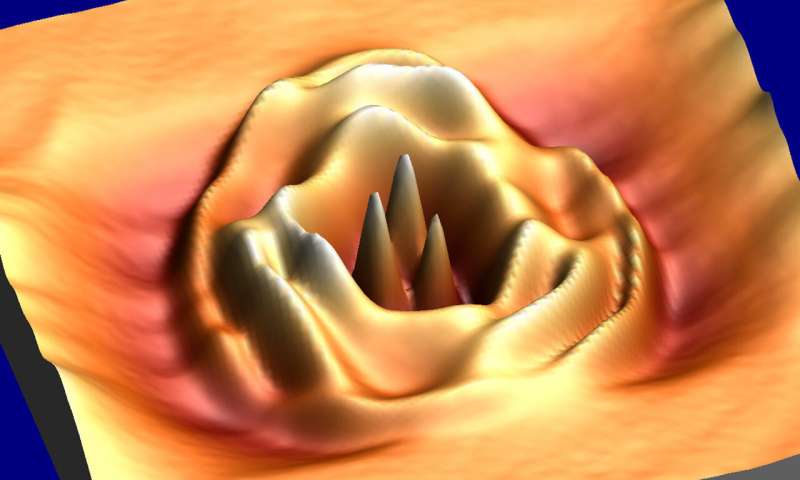So, occasionally I run across articles which mention quantum dots; but more frequently I notice this technology promoted in higher quality flat screen displays and TVs. Photo-luminescent nanotechnology. This Phys.org article (below) reminds me that the technology is critical in quantum information processing, e.g., quantum computing.
And as Wiki notes, modeling quantum dots showcases the interplay of quantum mechanical, semiclassical, and classical physics: “A variety of theoretical frameworks exist to model optical, electronic, and structural properties of quantum dots. These may be broadly divided into quantum mechanical, semiclassical, and classical.”
Phys.org > “Direct visualization of quantum dots reveals shape of quantum wave function” by University of California – Santa Cruz (Nov 24, 2020)

Trapping and controlling electrons in bilayer graphene quantum dots yields a promising platform for quantum information technologies. Researchers at UC Santa Cruz have now achieved the first direct visualization of quantum dots in bilayer graphene, revealing the shape of the quantum wave function of the trapped electrons.
Understanding the nature of the quantum dot wave function in bilayer graphene is important because this basic property determines several relevant features for quantum information processing, such as the electron energy spectrum, the interactions between electrons, and the coupling of electrons to their environment.
“The peaks represent sites of high amplitude in the wave function. Electrons have a dual wave-particle nature, and we are visualizing the wave properties of the electron in the quantum dot.”

This article has a useful diagram showing the relationship between dot size and color emission [1]. Nanometers!
• Gizmodo > “How Quantum Dot OLED Will Change the Way TVs Look” by David Nield (Jan 10, 2022) – At this year’s CES, a new type of display technology showcased an improved viewing experience.
See also:
• Cnet > “Samsung’s QD-OLED TV tech explained: Welcome to the quantum dot era” by Stephen Shankland (Jan 6, 2022) – The electronics giant says quantum dots offer more vivid colors than regular OLED TVs made by rival LG. But they’re gonna cost you.
Notes
[1] Here’s that diagram.
• Samsung Display > “Quantum Dot”
This article describes a research milestone in creating on-demand entangled photon pairs using semiconductor quantum (dot) emitters (vs. crystal-based spontaneous parametric down-conversion). The writer characterizes the pair as “linked.”
• Phys.org > “New light source emits bright, entangled photons for quantum communication” by TranSpread (August 5, 2024)
Related articles
• Nature > “Robust, high brightness, degenerate entangled photon source at room temperature” by M. V. Jabir & G. K. Samanta (October 3, 2017)
• Lund University Publications > “A high brightness source of entangled photons” [pdf] (Spring 2010)
1 Introduction
1.1 History
1.2 Photonic entanglement
1.3 Different forms of entanglement
1.3.1 Momentum
1.3.2 Energy-Time
1.3.3 Polarization
1.4 Measuring entanglement
1.4.1 Coincidence fringe visibility
1.4.2 Bell’s inequality
Related questions
• How are entangled photons measured?
• How do you know if two particles are entangled?